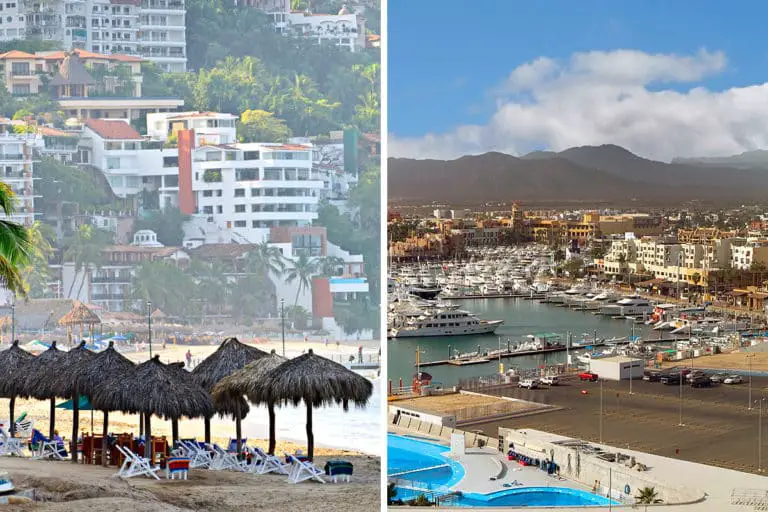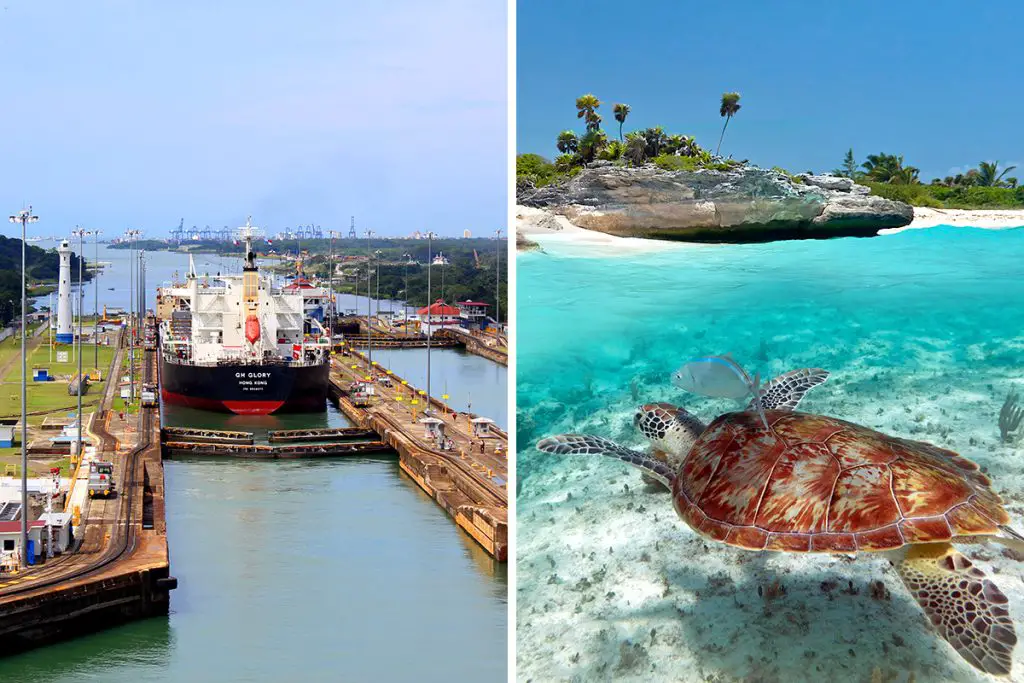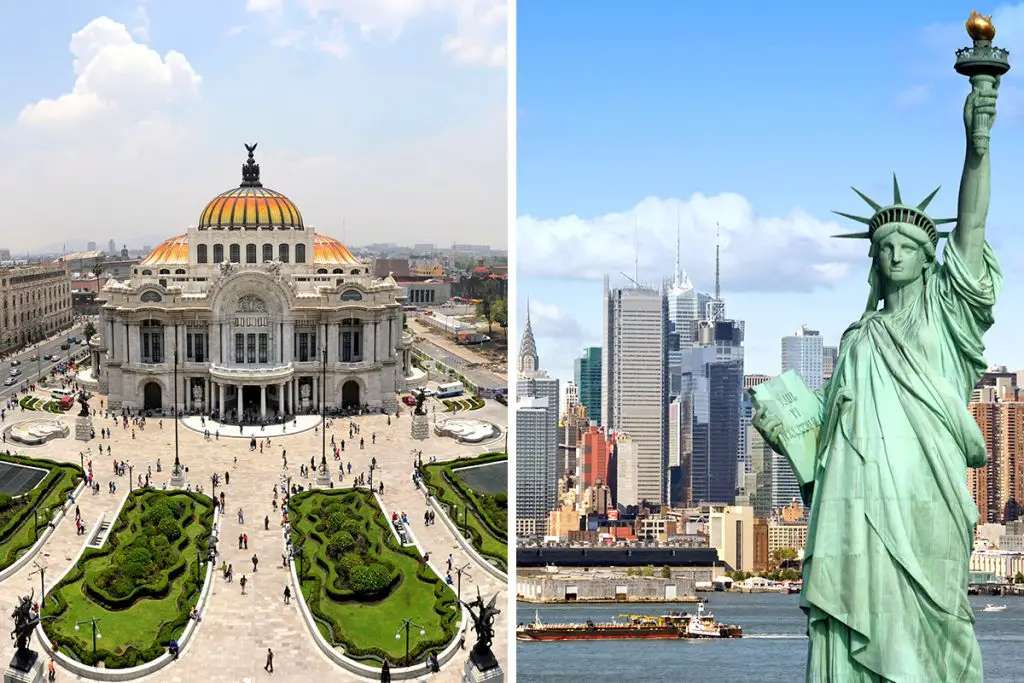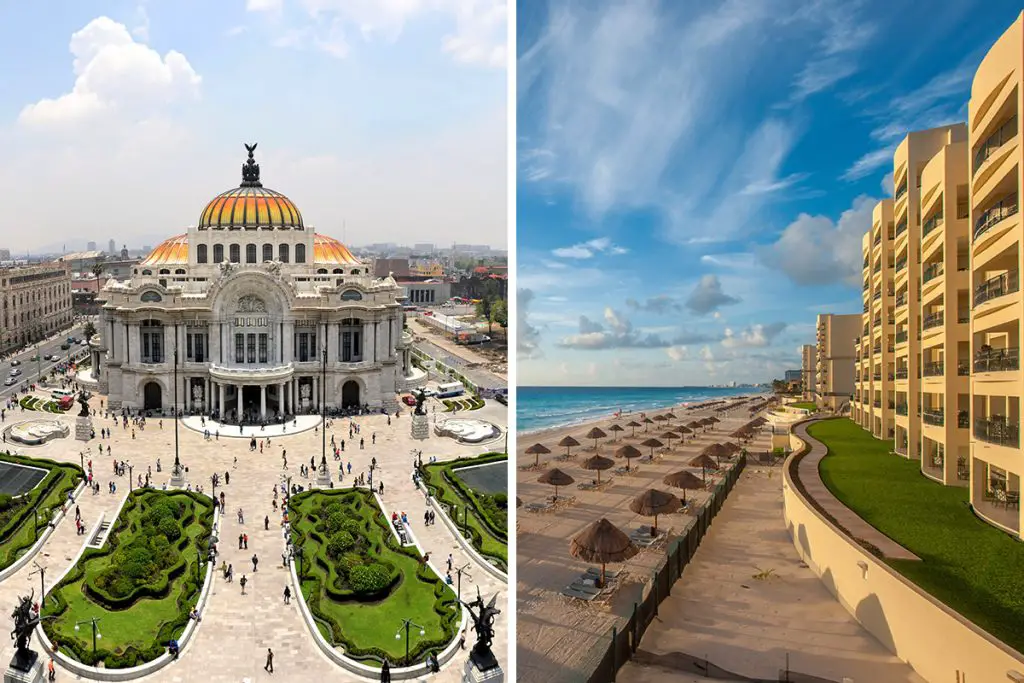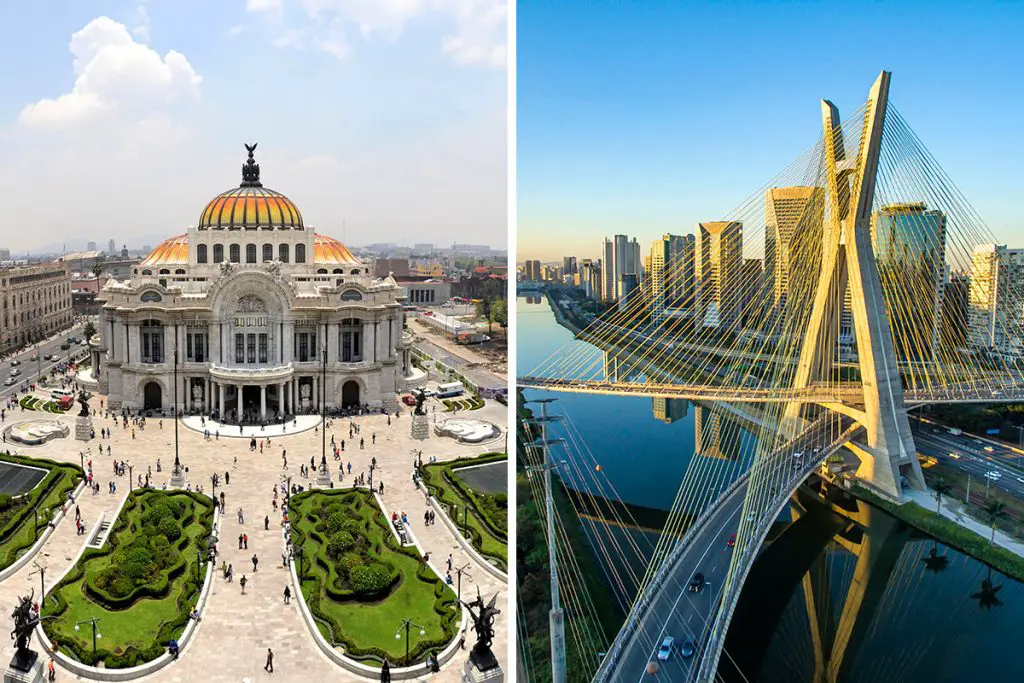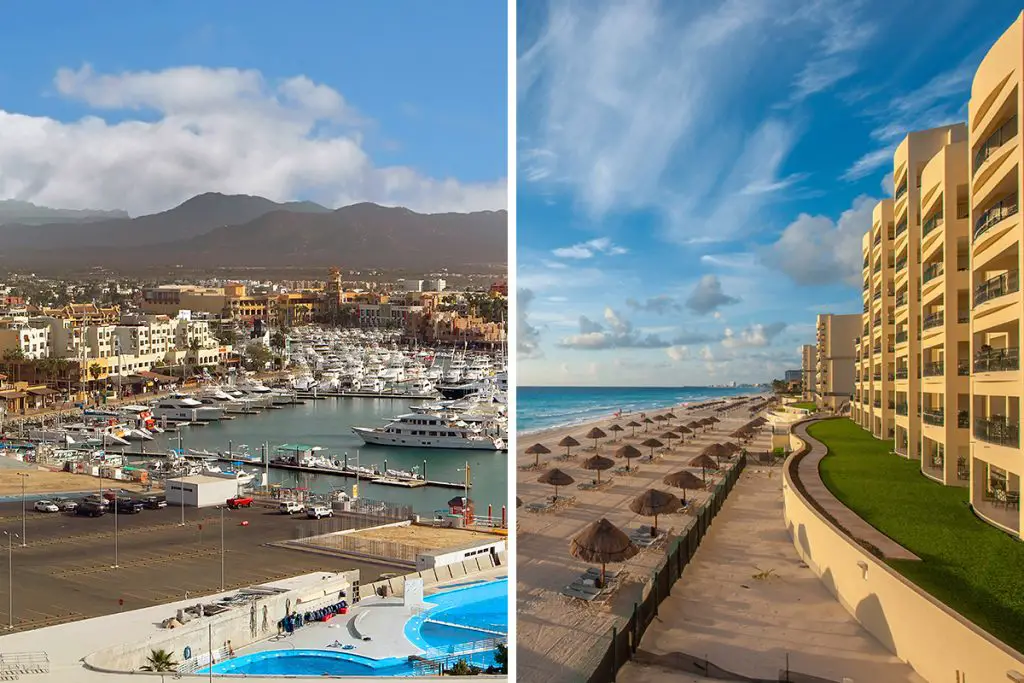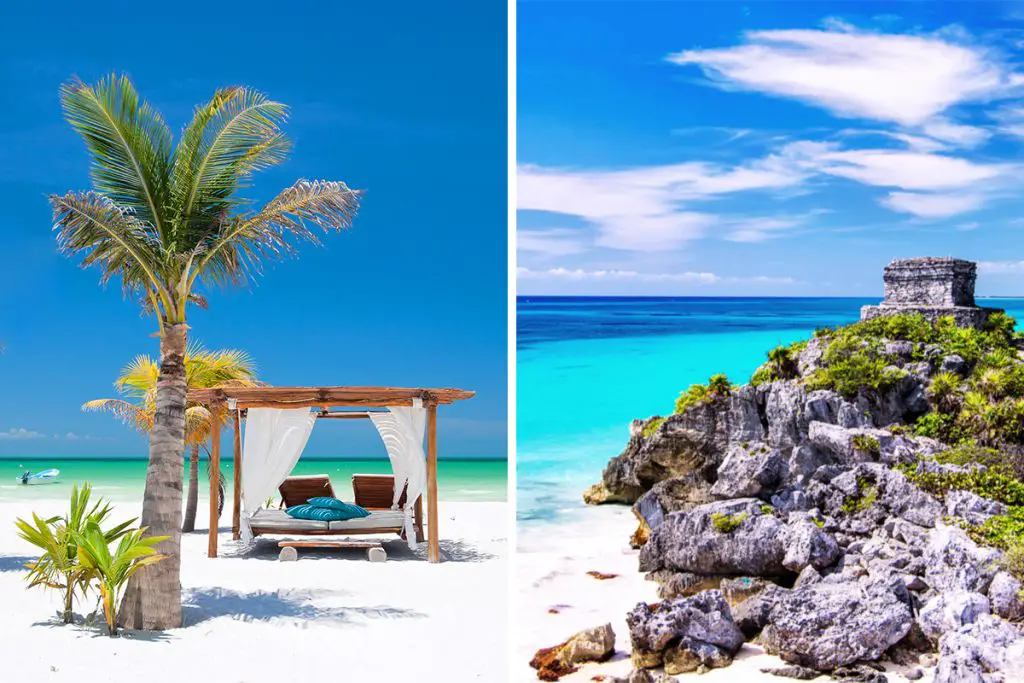If you’re looking for a seaside city that prides itself on its authentic charms with a unique twist to its beaches, Puerto Vallarta will readily embrace you. But if you’re looking for a more chic and upscaled take on a holiday, and maybe even a celebrity sighting or two, head down to Los Cabos.
Puerto Vallarta
The Mexican Pacific gem is probably one of Mexico’s most authentic touristy cities. Puerto Vallarta has never failed anyone to be consistently alluring and successful. Expect to witness a genius balance of cultural authenticity alongside mass-tourism appeal. It is often said that Puerto Vallarta best explains what a Mexican coastal city is.
Puerto Vallarta, best demonstrates that a tourist-saturated city doesn’t need to upscale. PV, as it is lovingly called, proudly conserved and flaunts its authentic charms. The city has a different take on beaches, it has kept its cobblestone streets, all while having a slew of hotels and a nightlife to beat.
What Makes Puerto Vallarta Unique?
The City’s Beachside Heart
Mexico’s Caribbean coasts may be thick with legendary white sands brushed by turquoise blue waters, but PV has a different take. The city is notable for its golden sands that seem to gleam when hit by the sun. As you cruise along the water, you’ll most likely see a seemingly gilded coast.
While vast stretches of white sands may be the majority’s cup of tea, PV’s gilded beaches may take a different kind of perspective to be appreciated.
What’s also fascinating about PV’s beach is how the entire city itself runs along the coast. PV stretches itself running parallel to the Pacific Ocean. However, you may expect to find a stretch teeming with beaches, but PV doesn’t sport a ton of beaches in the main areas of the town.
Most of the most recommended beaches in PV are located outside of the city center. Head south from the Zona Romantica and visit these beaches:
Conchas Chinas
Just minutes away from the Zona Romantica, Conchas Chinas isn’t just accessible but also one of the most fascinating beaches in the area. Conchas Chinas is an enclave nestled between the Sierra Madre’s rainforest and the Pacific Ocean. The setting provides a gorgeous landscape that captivates travelers.
Conchas Chinas has its own unique food and drinks scene. The beach features various restaurants nearby that also have bars and serve a variety of regional specialties.
Playa Palmares
Apart from appreciating the stunning ocean and mountain, you may relax, work on your tan, swim, and fish from the coast or play in the sand at Palmares Beach. The beach is a wonderful spot to spend quality time with family and friends. Additionally, you will very certainly come upon a seller selling the typical, wonderful fish-on-a-stick, much to your joy.
Playa Palmares is 7.5 kilometers (4.6 miles) from Puerto Vallarta’s downtown area. It takes about 17 minutes to get there, and the ride is beautiful. The road runs parallel to the ocean’s edge and provides views of both the sea and the mountains.
Punta Negra
Playa Punta Negra’s best draws? How swimmable it is for everyone, especially smaller children. The beach’s waves are comparable to swimming pools. Punta Negra is noticeably cleaner and has fewer people. If you’re looking for a beach where you can truly relax in PV, Playa Punta Negra is the right place.
Other than pure relaxation, the beach also offers decent underwater activities as well. These include snorkeling, swimming, and many other activities. They are done best before your well-deserved R&R.
A few vendors roam up and down the beach selling snacks and trinkets, fresh fish, and fruits that may be purchased near the entrance.
Los Muertos
Playa Los Muertos is the most famous, and most visited beach in Puerto Vallarta. It’s located south of Puerto Vallarta’s central area, the Malecon, and the Cuale River. Walking south along the Malecon is an easy way to get there.
Families, locals, and visitors from adjacent cities and states all flock to this beach. Visitors and expats alike congregate here to enjoy the local culture. It’s a lively area, and a perfect spot to drink a beer by the sea, with your feet in the sand, and simply watch the now-famous sunsets.
El Malecon
The lack of beaches in its center marks up for its grand Malecon. A mile-long boardwalk stretches along the heart of the downtown area.
The stretch sports restaurants, food stalls, cafes, shops, art galleries, and public art pieces. El Malecon offers you establishments on one side and the Pacific Ocean on the other.
Marine Meetings
Several areas in Mexico’s Pacific coasts tend to become centers of congregations of marine animals. Most of which have traveled from far and wide across oceans. Experts say that they gather due to plenty of reasons, one of which is mating. The result? A unique tourist spectacle.
Expect to encounter a diverse set of marine animals in the area near PV. Among the marine animals, you might catch are whales, sharks, whale sharks, dolphins, manta rays, and turtles. You can book sea excursions from the many that speckle across the city.
The seas across PV have conditions that make snorkeling, diving, and close encounters a possibility. Thanks to the Pacific Ocean’s clear visibility and mild temperatures.
Pueblos Magicos
Part of Puerto Vallarta’s charm is its accessibility to several small unique towns across the Mexican Pacific states. These little towns are perfect for day trips for the ever-curious wanderers.
These towns have quirks and charms of their own that have added value to Mexicos’ tourism. And a wealth of them has preserved their unique Mexican spirits as well. The Mexican government has given them a special designation and has labeled them “Pueblos Magicos” or Magic Towns.
Check out some of them just a few hours away from PV:
Sayulita
Famous among the slow and simple living crowd, Sayulita is a nomad’s paradise. This magic town is packed with rustic appeal, simple yet authentic. Coffeeshops and food places also litter the town providing a vibe that is just quaint yet appealing.
Compostela
Compostela, also known as Villa de Santiago de Galicia de Compostela de Indias, is one of Nayarit’s most famous cities. This lovely part of Mexico is rich in natural resources, with big green spaces and lengthy beaches nearby. It also has significant historical and cultural landmarks.
San Sebastian del Oeste
Stepping into the town of San Sebastian del Oeste isn’t just a mere throwback, but one big blast into colonial past. The buildings here have matured elegantly over the decades. Walking around the haciendas and through the alleys will give you a sense of what life was like in this Mexican mining town in the 1700s and 1800s.
Los Cabos
Los Cabos, not to be confused with Cabo, is probably the Mexican Pacific’s hottest destination. Located right at the tip of Baja California Sur, Los Cabos’ draws can compete against Cancun itself.
The fun twist? The seaside marvel isn’t just one city, but a combination of two towns and a planned tourist expanse, tripling its charms. That’s even more than most coastal cities in Mexico can offer.
Whether you want an authentic and rustic ambiance or high street scenes, Los Cabos offers a variety of experiences. A lot of which is perfectly suited to different kinds of travelers. True to its quality, Los Cabos is a favorite destination for many of Hollywood’s A-listers.
What Makes Cabo So Unique?
The Triple Charm
Don’t confuse Los Cabos with Cabo San Lucas, better known as Cabo. The famous glittery town is just one of three parts of the entire Los Cabos charm. Los Cabos consists of Cabo San Lucas, San Jose del Cabo, and The Corridor.
Whichever you go, expect to see something you’d fall in love with in Los Cabos. All these three areas have a whole slew of draws in themselves. What’s interesting is that these places are distinct and equally exciting, making Los Cabos bursting with things to do, see, and explore.
Cabo San Lucas
The shining, high-street area, Cabo San Lucas, or just Cabo, is well-loved by the moneyed lot, and those who love to have fun at night. Cabo San Lucas is rather known for its animation and nightlife, it is considered to be the dynamic side of Los Cabos.
Cabo San Lucas is one of the top five travel destinations in all of Mexico. It’s a spectacular exhibition of high-end resorts, nightclubs, and beautiful beaches. The city is framed by an iconic and attractive natural archway on a historic rocky cape (thus, the name Spanish term “Cabo”) off the shore. The view is perfect for any summer beach getaway.
San Jose del Cabo
San Jose del Cabo is the complete opposite of Cabo San Lucas. The town is more rustic, authentic, and offers a more modest yet aesthetic view of Los Cabos. Laid-back and chic are the best words that describe the colonial town.
It has a beautiful world-class marina that overlooks the Sea of Cortez. On top of that, it also has breathtaking gold-sand beaches that are home to some well-known surf areas and wildlife.
In San Jose del Cabo, you can have the perfect balance of slow and rustic living, with an air of romance, alongside art and beauty if you want a bit of old-world sophistication.
The Corridor
Another quirky thing about Cabo is its planned tourist area that houses Cabo’s best hotels and accommodations. The Tourist Corridor is a 20-mile stretch (32 km) that faces the Pacific Ocean, straddling between Cabo San Lucas and San Jose del Cabo.
Now imagine a vast expanse of coast filled with hotels and other amenities for you to enjoy. Cancun has indeed found its rival in Cabo. The Tourist Corridor is home to Cabo’s most impressive resorts and offers the most comprehensive shopping scene.
The Aquarium of the World
All of Los Cabos sits adjacent to an aquatic expanse that is one of the most diverse in the whole world. The Sea of Cortez is nestled between the Baja California peninsula and the Mexican mainland. Also called the “Aquarium of the World”, it has a rich collection of marine life, among many other features.
French explorer Jacques Cousteau explored the sea on an expedition in 1940 and called it one of the best diving sites in the world. You can also have above-the-surface fun in the Sea of Cortez. It has calm waters, clean beaches, and distinct geology both in and out of the water.
The Arch at Land’s End
Los Cabos’ list of quirky features, both in and out of water, runs long. And one of its most interesting and probably the most iconic entry is The Arch. El Arco in Spanish is one of the must-stop sites when you’re in the area, it is often seen in several travel features across many publications.
What makes this formation special is how peculiar it juts out of the ocean. Nestled right at the tip of Los Cabos, called Land’s End, The Arch is a landmark that has defined the charm of the region. It has this curious scenic appeal that has kept calling to swaths of visitors like a siren in the sea.
Fortunately, The Arch is not for your eyes only. The formation is accessible via tours you can find across Cabo San Lucas. You can take boat excursions, sunset sailing, scuba dive, and flyboard around Land’s End and The Arch. And during low tide, you can head to the nearby Playa del Amante, or Lovers Beach.
Verified Beaches
No tourist destination is perfect around the seams, and Los Cabos has its drawbacks as well. The area may be famous for its picturesque scenes, and overall vibe, but the beaches can sometimes turn heads away. Several of Cabo’s beaches aren’t actually safe to swim in.
A lot of these beaches can be risky to both swimmers and nonswimmers alike because of their conditions. First off, rogue waves are rampant and can easily harm unsuspecting swimmers. Riptides and strong undertows are common occurrences as well that can potentially drown a lot of people.
Since no one can really alter Mother Nature, the local authorities adjusted. They devised a system that can inform people of which beaches they can go to and which they can’t. Beaches that are designated with a blue flag indicate that they are not only safe, but they passed the quality standards as well.
Blue flag beaches are required to meet certain conditions that provide the utmost quality and safety for visitors. These conditions include cleanliness, accessibility, water quality, and shoreline and ecosystem protection. This just proves that Los Cabos takes its safety and quality with great importance.
The Endless Sunny Days
One of the greatest advantages the Mexican Pacific coast has is its pleasant weather full of sun and wind. Expect to have a very sunny stay in Los Cabos, perhaps even sunnier than the Caribbean coast’s Cancun. Thanks to its location, Los Cabos enjoys an average of about 350 sunny days a year.
That is a selling point enough.
But with seemingly endless days, you can also expect some searing temperature in certain seasons. On average, from May through October, highs can soar up to the 90s (++32ºC), but Los Cabos boasts its consistent minimal humidity levels. But the heat can quickly diminish as soon as the sun goes down.
Golf Mecca of Latin America
Los Cabos is Latin America’s golfing capital. The expansive greens and dessert terrains of Los Cabos are home to a sheer number of golf courses, each one especially designed. You can find a total of over 18 golf courses, each unique, and each hosts its own events. Whether you’re a beginner or a pro, you’ll most likely find a course perfectly suited for you.
Several of these courses are designed by big-name architects such as Peter Dye, Jack Nicklaus, and Tom Fazio. But expect to have high-rolling rates for each designer golf course. Check out some of the most recommended:
Cabo del Sol
Golf Magazine has named Cabo del Sol among the top 100 courses in the world. Cabo del Sol is a wonderful golfer’s paradise. It has gorgeous greens facing the glistening Sea of Cortez.
The course has also hosted countless championship tournaments. “The nicest golf property I’ve ever seen,” says course designer Jack Nicklaus of the Ocean Course.
Quivira Los Cabos
Quivira Golf Club, which opened five years ago, has swiftly established itself as one of the top new courses in the world. Quivira Golf Club is another world-class Jack Nicklaus Signature design.
It was created as a unique amenity for Quivira owners and guests of Pueblo Bonito Golf & Spa Resorts. Quivira Golf Club has the best beachfront setting of any Los Cabos golf course, with breathtaking ocean vistas from every hole.
Chileno Golf Course
Chileno Bay Golf & Beach Club is a 1,200-acre (486 ha) private resort complex on the Sea of Cortes with protected beaches on a 2.5-mile (4.0 km) stretch of shoreline. The highlight is a beautiful Tom Fazio–designed golf course set high above the Sea of Cortes in the arid foothills.
The design features graceful, flowing landforms that are meant to mimic rolling ocean waves. Chileno Bay is a great place to play for average players, with spacious fairways and little rough.
Puerto Vallarta or Los Cabos – Which Is Better?
Puerto Vallarta and Los Cabos are probably two of the most famous destinations in all of the Mexican Pacific. The best prove that Mexico’s best aren’t cramped up in the Caribbean. While both have their distinct twists and appeals, what determines which is better rests on a myriad of factors.
Puerto Vallarta, first off, is cheaper than Los Cabos. This automatically puts PV at an advantage. The gilded beach city is famous for its ability to perfectly welcome mass tourism while keeping its authenticity as its biggest draw. While the city is lined with top-rated resorts don’t expect it to be as chic and upscale as most of Los Cabos.
Los Cabos, as previously pointed out, can be a bit pricier. However, expect to see a lot of diverse scenes around the area. You can experience three different ambiance and flavors from its three towns. It offers a whole lot more experiences and opportunities than PV. However, you can only swim among a select few beaches.
FAQ
How Far Is Los Cabos From Puerto Vallarta?
Los Cabos is approximately 546 km or 339 miles from Puerto Vallarta, directly. They both front the Pacific Ocean, and can sometimes be considered adjacent to one another.
However, the sheer road distance is a different story. Should you brave the long highways, the distance is approximately 3,464 km or 2,152 miles.
How Do I Get From Los Cabos to Puerto Vallarta?
There are three well-known ways to get in between Los Cabos and Puerto Vallarta: via car, bus, or plane. Car rentals speckle both destinations, so you can easily find several means. Buses may take longer, but they still do the job safely. But for a time and cost-effective choice, flying is always the best to take.

